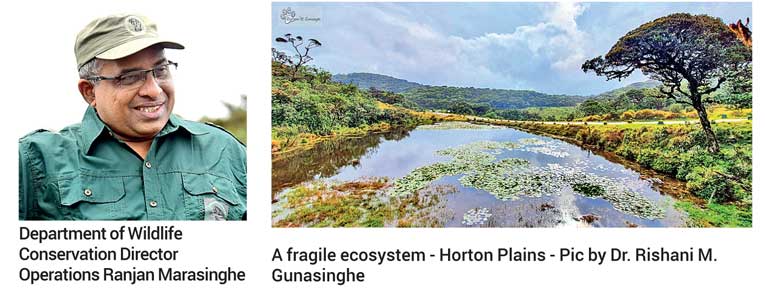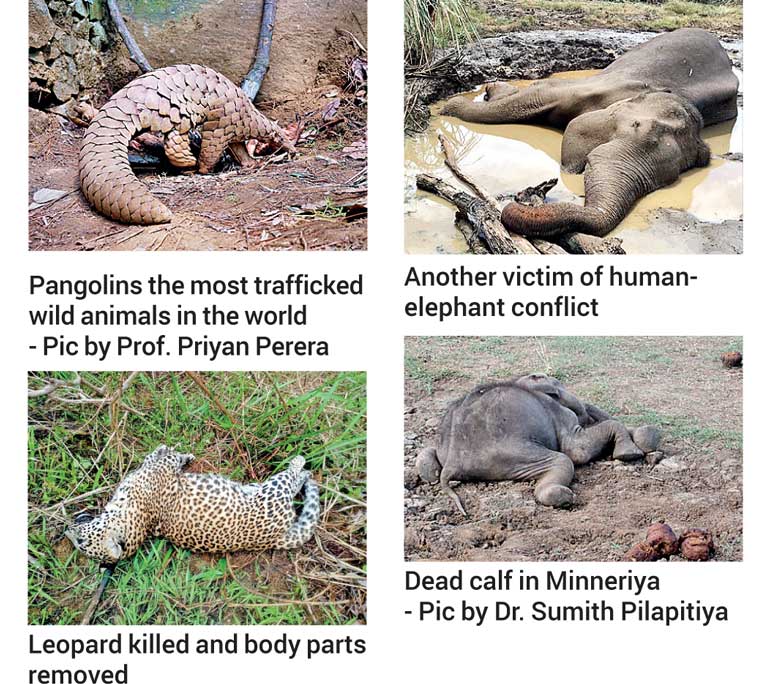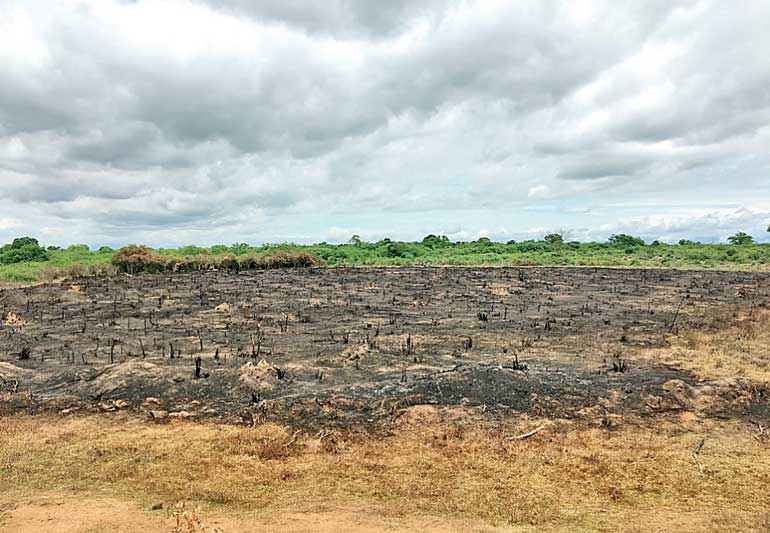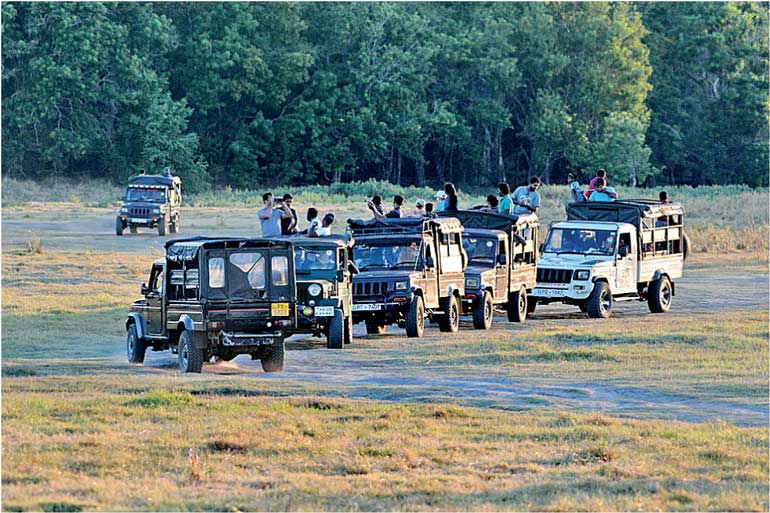Sunday Jan 05, 2025
Sunday Jan 05, 2025
Tuesday, 13 September 2022 00:58 - - {{hitsCtrl.values.hits}}



Land clearance - Mattala Lunugamvehera - Pic by Spencer Manuelpillai

Managing over visitation - Minneriya gathering
- Picby Ranjan Josiah

The Knuckles Mountain Range - Pic by Ranjan Josiah
The Nations Trust WNPS Monthly Lecture on Thursday 15 September at 6 p.m. at the Jasmine Hall, BMICH will focus on the topic of ‘Wildlife conservation in Sri Lanka: Are we headed in the right direction’.
The lecturer is Department of Wildlife Conservation Director – Operations Ranjan Marasinghe.
The Wildlife and Nature Protection Society said with media reports filled with tales of human-wildlife conflict, rampant deforestation, illegal encroachment into natural habitat, and increasing poaching, amongst others, there is no doubt that the wildlife and wilderness of Sri Lanka are under the greatest threats they have faced possibly since the time the Colonial British cleared the highlands for the growing of coffee, and then tea. This time, however, it is happening from the mountains to the coast, in every national park, forest reserve, sanctuary, protected area and remaining natural habitat in between.
The COVID-19 pandemic and the serious financial crisis this country is in at the moment, have resulted in the worsening of the situation especially over the past two years. It must also be accepted that that age-old bane of conservation in this island, the intervention of politics and politicians continues to have a detrimental effect on the efforts of conservationists, both statutory and non-governmental. However, scientific knowledge and understanding has increased in leaps and bounds over the past few decades and where once decisions were made based on empirical and often anecdotal evidence alone, wildlife and environmental researchers now base their findings on years and years of observation, and analysis of data. This invaluable input has led to the formulation of some excellent conservation plans and policies, both for specific areas and species, but are usually never, or only partially, implemented.
The WNPS was one of the main proponents for the establishment of the Department of Wildlife Conservation (DWC) as a separate entity from the Forest Department who then had jurisdiction over wildlife too. Today, the DWC is the sole statutory body responsible for the protection of all wildlife in the country, and of the protected areas under their jurisdiction. While the commitment of the DWC staff in the field has never been in doubt, often risking their lives for the protection of an animal, there have been doubts raised about the sharing of this devotion amongst the hierarchy of the department. As the only governmental department dedicated to the protection of wildlife in Sri Lanka, some wonder as to whether they bow too easily to political expediency and thereby lose focus on their main reason for being in existence.
Ranjan Marasinghe first joined the DWC in 2006, as an Assistant Director of Planning and ICT. He has since worked his way up the ladder of success, and is now the Director of Operations. Credited with many of the innovations that have taken place within the structure of the department, he also has field experience as the Regional Assistant Wildlife Director for the Mahaweli Region. With a multitude of academic achievements to his credit, and as a visiting lecturer on wildlife management and innovation at several institutions, he is the current focal point for CITES in Sri Lanka, and for the South Asian Wildlife Enforcement Network. Articulate and not afraid to face controversy, there is no one better, not only to address the topic of this lecture, but also to respond to those doubts raised above.